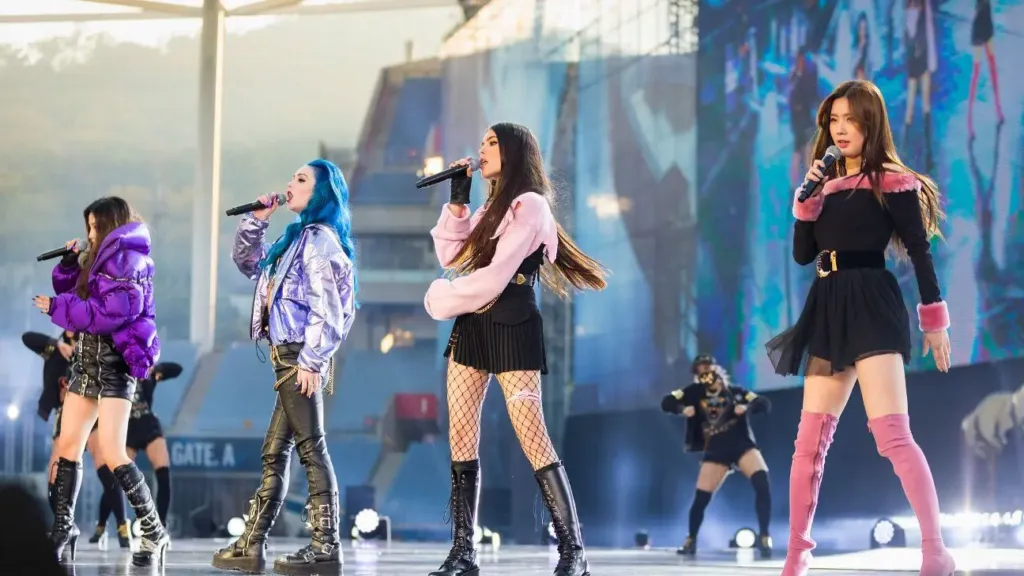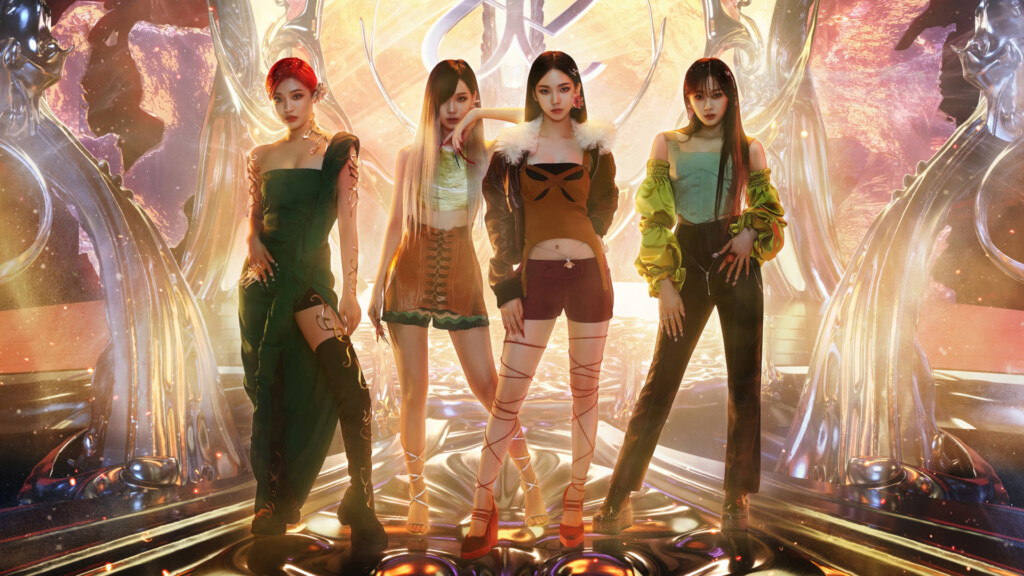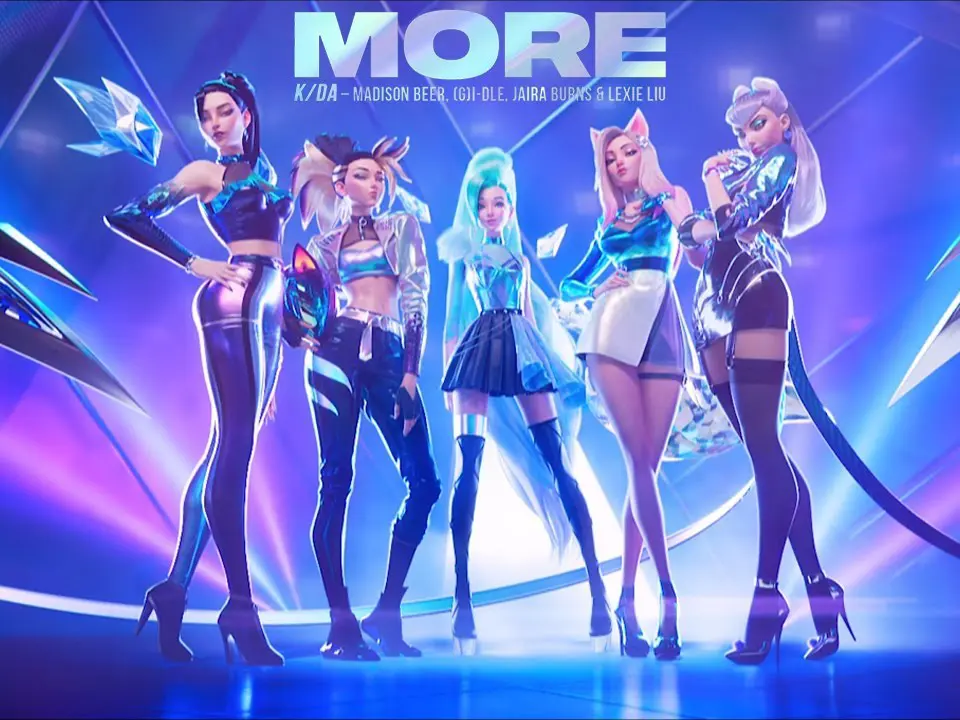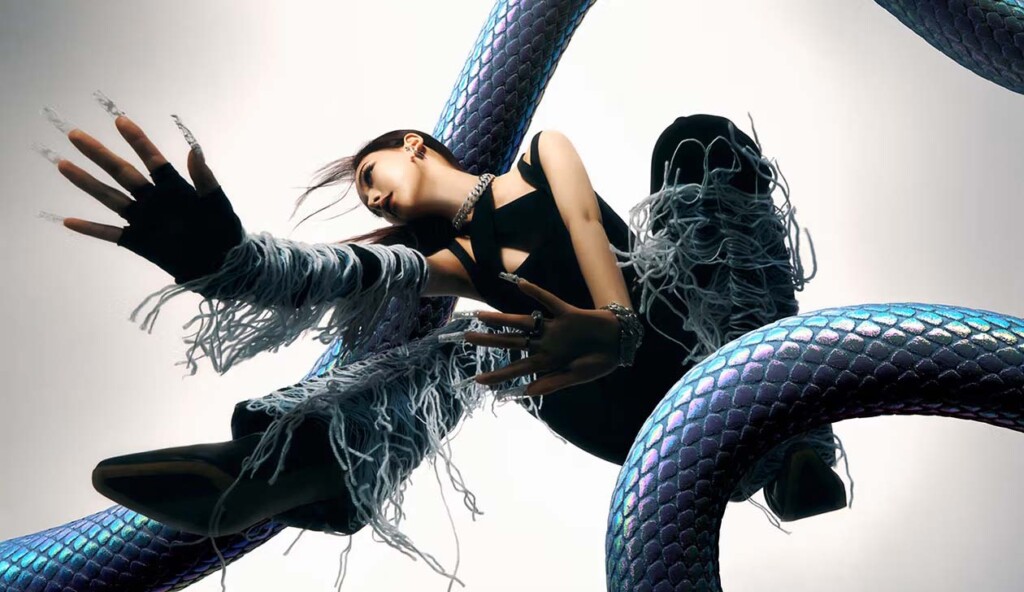aespa – the 4th generation girl group under SM Entertainment – debuted in 2020 with the single Black Mamba. While the group drew attention for its AI-driven concept and virtual universe, it has also faced recurring controversies: from plagiarism accusations and comparisons with pre-existing works to allegations of favoritism and unequal treatment. As a result, aespa has often become a hot topic of discussion within the K-pop community.
aespa vs. K/DA
Immediately after the release of the Black Mamba music video, many viewers and gamers compared it to POP/STARS by K/DA – a virtual group created by Riot Games. Observers pointed out similarities such as neon color palettes, the giant snake imagery, and 3D character styling. On platforms like Reddit and Twitter, some critics argued that SM was “playing it safe” rather than being truly innovative.

Visual artist Timo Helgert also claimed that certain scenes in Black Mamba resembled his work and had been used without permission. In addition, aespa’s stage design on Inkigayo was compared to the signature 3D style of international digital artist Blake Kathryn.

However, others countered that elements such as neon colors or snakes in visuals are common motifs in art and cannot be considered the exclusive property of a single creator.
aespa vs. LOONA
Before aespa, LOONA – a girl group under Blockberry Creative – had already built the “LOONAVERSE,” a fictional universe connecting its music videos and characters. Thus, when SM introduced Kwangya and the SMCU, many LOONA fans (Orbits) accused the company of borrowing ideas. This controversy gained traction on the subreddit r/kpopthoughts during 2020–2021.

Still, some argued that story-driven universes had long been a staple in K-pop, with groups like EXO and BTS also using similar concepts, and therefore aespa’s approach could not be labeled as simple imitation.
aespa and The Matrix
International outlets such as W Magazine, Paper, Nylon, and Billboard have remarked that aespa’s metaverse concept evokes parallels to science fiction works like The Matrix. The most notable resemblance lies in the relationship between humans and their digital counterparts, as well as the struggle against dark forces in a virtual realm.

Additionally, aespa’s use of AI and virtual reality has often been likened to imagery from popular video games such as Cyberpunk 2077 and Horizon Zero Dawn. This has led some to believe that aespa is essentially reassembling existing cultural themes rather than presenting a wholly original creation.